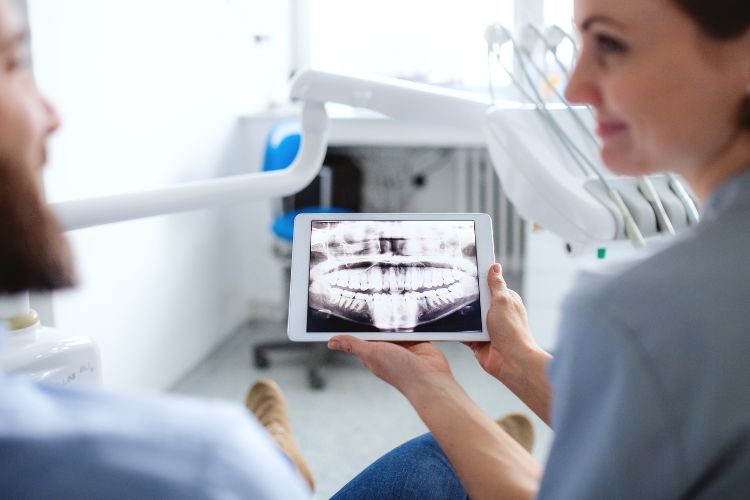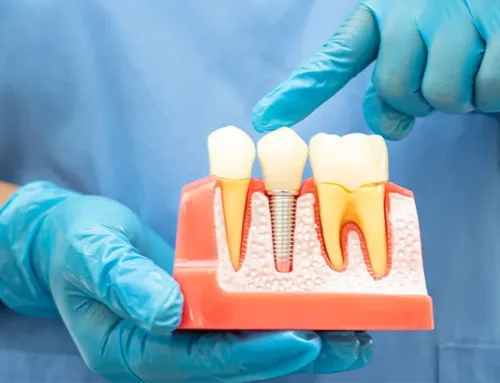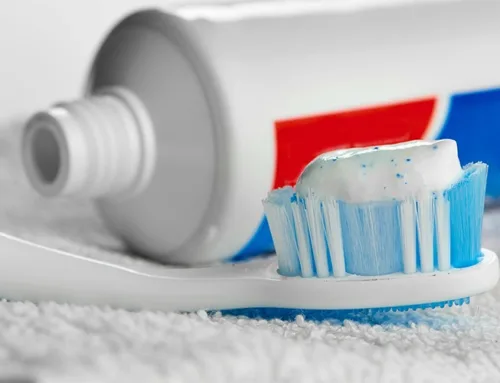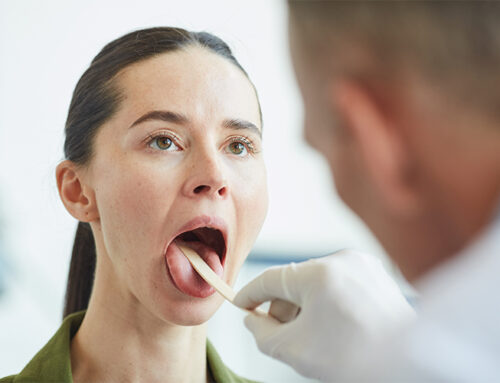All Of Your Questions Answered About X-Rays
December 21, 2022
If you’ve ever had a cavity filled, a root canal procedure, or your wisdom teeth extracted, then it’s likely your dentist has taken dental x-rays of your teeth and gums to get a better look at what’s going on beneath the surface. Dental x-rays are one of the primary tools that dentists use to plan out procedures to achieve the best results. You may already know that x-rays are a form of radiation, and you may have heard that radiation is dangerous, which is why we’ll be exploring the most commonly asked questions around x-rays in this post.
Let’s dive in and learn about what they are, if they’re safe, and why they’re such an important part of modern dentistry.

What Are Dental X-Rays?
Before we delve into the specifics of dental x-rays, it is important to cover what x-rays are in general. X-rays are a form of radiation – an invisible electromagnetic energy – much like those that come from the sun (ultraviolet rays), or those that the popular kitchen appliance, microwaves, use to cook your food.
Although UV rays are blocked by most solid objects, x-rays have enough energy to penetrate them. This includes the human body which allows for a wide range of medical applications; excluding bones; however, these waves cannot pass through. Medical practitioners are able to transmit small amounts of x-rays through one side of a patient, which then produces the standard negative image on the other end. This is how we arrive at that familiar x-ray imagery.
That being said, dental x-rays are a type of diagnostic imaging that allows dentists to get a clear picture of what’s going on beneath the surface of your teeth and gums. They use a very small amount of radiation (you receive almost 200 times as much radiation from simply existing on the Earth’s surface each year) to get a full picture of what’s happening inside your teeth and gums. This allows your dentist to plan around damage and decay, from the most obvious cavity, to the tiniest fracture.
Are Dental X-Rays Safe to Get?
While it’s true that x-rays use radiation, it’s important to understand that the amount of radiation used in dental x-rays is very low, and the amount of exposure you get during a standard dental x-ray is significantly less than what you’d be exposed to in everyday life (see above).
As a result, dental x-rays are considered safe and here at Tampa Palms, we take extra precautions to minimize risk and maximize protection for our patients. This includes using specially designed equipment made to reduce patient exposure, as well as, a variety of protective gear like shields, aprons, and other measures to ensure safety.
Dental X-Rays & Safety Around Children & Pregnant Women
While children and pregnant women have developing bodies that are more sensitive to the effects of radiation, the low levels in dental x-rays and the strict protocols that we use, ensures that our patients can safely receive them. We always take special care to minimize exposure, and use the lowest possible dose of radiation to get the necessary information needed to diagnose and treat dental issues in both children and expectant mothers. We only recommend dental x-rays for our pregnant patients when the benefits clearly outweigh the risks.
Why Would You Need Dental X-Rays Done?
There are several reasons that you might need dental x-rays, including:
- Determining the cause of unexplained pain or discomfort in your jaw, teeth, or gums.
- Finding out the cause behind unexplained changes in your teeth or gums, like loose fillings or broken teeth.
- Looking underneath the gum line at the roots of teeth to determine the best course of treatment for complex dental issues like root canals and impacted wisdom teeth extraction.
- To monitor and measure how your teeth and gums are responding to treatment. This includes looking at inflammation, infections, and other changes that are occurring in your mouth as you undergo treatment.
- Looking at the state of your jawbone to determine if it is strong enough for orthodontic work like dental implants.
As you can see, dental x-rays are an important tool used by dentists to diagnose and treat a wide variety of issues that can affect the health and well-being of your teeth, gums, and mouth.
Are There Different Types of X-Rays?
Yes, there are several types of x-rays that can be used in dentistry. These include:
- Panoramic X-Rays: This type of x-ray is often used to get a wider view of the entire mouth. It can be used to look at a variety of conditions, including impacted wisdom teeth, severe dental decay, and the position of your temporomandibular joint (the jaw joint).
- Bitewing X-Rays: This type of x-ray is used to look at the back teeth, where cavities are more likely to develop. These images can help your dentist find cavities and monitor the progress of restoration treatment as it takes place.
- Periapical X-Rays: This type of x-ray is specifically used to look at the roots of your teeth and how they are developing. It is used to diagnose issues like impacted or misaligned teeth and can also be used to monitor the progress of orthodontic treatment.
- Cone Beam Computed Tomography (CBCT): This advanced type of x-ray is used to create highly detailed, 3D images of both the teeth and underlying bone tissue. Typically, it is used to plan complex dental procedures like implant placement or wisdom tooth extraction.
- Digital X-Rays: This type of x-ray uses digital sensors instead of film to capture and process the images. They are more sensitive than traditional x-rays, which means that they can provide more detail and information about your teeth, gums, and mouth.
If you have any questions about dental x-rays or would like to schedule an appointment, please contact Tampa Palms Dentistry today. We would be happy to answer your questions and help you get the information you need to make informed decisions about your oral health.








